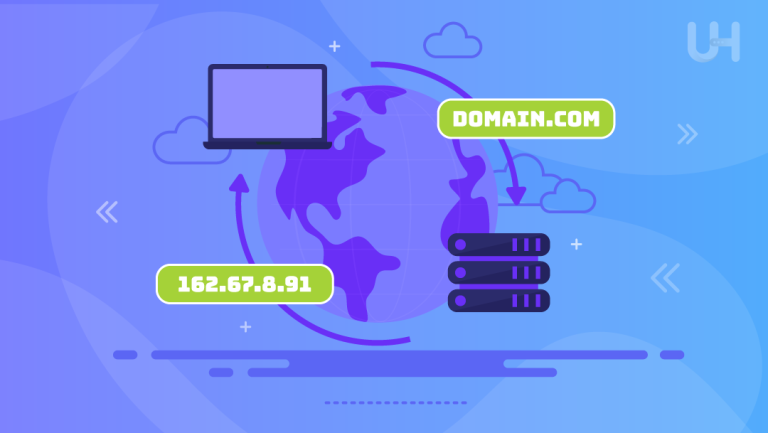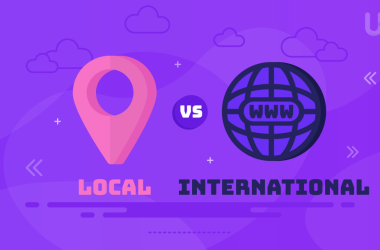The internet is a massive, complicated web of networks that needs an ordered system of domain names. A part of the core domain name hierarchy element is TLDs. TLDs form the central aspect of this system. Generic top-level domains assume a significant role in these TLDs.
In the following article, we discuss what gTLDs are, their history and different varieties, specifically in comparison with country code top-level domains (ccTLDs). We’ll also cover why registering for multiple domains is beneficial.
What is DNS?
To explain the generic Top Level Domain, we first need to explain what a domain means. A domain name refers to the text representation of information that identifies a website’s position online, similar to a website’s address. It is part of how your online identity will appear, so one should consider this during the inception phase of the business or any venture in general.
The Domain Name System (DNS) was designed in 1983 to make domain structuring across the Internet more convenient. According to research conducted by Netcraft, over 1.1 billion websites are hosted in more than 271 million varied domains, so the evident necessity of this system has risen.
The DNS works more or less like the Yellow Pages of the Internet, which promotes domain names or website names that users can easily remember instead of their dedicated IP address. For example, once a user enters examplewebsite.com into his browser window, the DNS would translate what has been entered into an IP address – thus working effectively like a phonebook, by providing an alphabetic listing for what otherwise would be a numerical identifier about the website.
Components of a Domain Name
A domain name contains several elements, but the main two are top-level and second-level domains.
Top-Level Domain
The top-level domain or domain extension is the very end of the URL, added after the final dot. This may stand for a generic TLD, like .com, or a ccTLD, which stands for country code TLD, for example, .co.uk. TLDs are part of the DNS hierarchy and help the DNS resolver to query the TLD server about the origin server’s IP address.
Second-Level Domain
The second-level domain (SLD) is the portion just to the left of a top-level domain. It is usually the most important part of an FQDN, as it reveals the entity the domain belongs to, thereby giving visitors an overview of exactly who you are and what your site has in store for them.
Subdomain
A subdomain is an optional part added to the left of the SLD, separated by a dot. It helps create distinct sections within a website. For example, in blog.example.com, “blog” is a subdomain, designating a particular segment evaporated to assist yet still forming part of the main domain. Subdomains can also have their own rankings in search engines.
What is a gTLD?
A Generic Top-Level Domain (gTLD) refers to one of the top levels in the hierarchical Domain Name System on the Internet. It comes immediately after the last dot in a domain name, for example, .com, .org or .net. The gTLDs group these domains under different categories based on their purpose, organization type, or geographical location.
The Internet Corporation for Assigned Names and Numbers oversees the operation of the gTLDs, managing them to ensure their stability and security in the global Internet infrastructure. Initially, there were a few original gTLDs; however, the need for more diverse and specific domains has seen this number expand drastically.
Enhance Your Presence With The Perfect Domain!
Ready to secure your ideal gTLD? Explore the extensive range of gTLDs available at Ultahost Domains. With options tailored to your needs, you can boost your brand identity and connect more effectively with your audience.
History of gTLD Domain
The first set of generic top-level domains was laid down by RFC 920 and introduced in October 1984 for broad purposes. The six gTLDs introduced at the beginning remain very popular today:
- .com: It was originally intended for commercial organizations but is now open to all.
- .edu: This is for educational institutions, primarily universities.
- .gov: Reserved for government entities.
- .mil: Reserved for the United States Department of Defense and military organizations.
- .net: Originally intended for network organizations, like internet service providers. Now open to all.
- .org: Initially, it is for organizations that do not fit other categories. Often used by non-profits.
These gTLDs are opted for by companies due to their long timeline and are considered to be more trustworthy. While most of them are open for general use, their initial intentions still retain a notion in the user’s mind in the market. For example, .com is associated with commercial sites; on the other hand, .org is associated with not-for-profit sites. With a domain name, users will address a website fitting their purpose.
Sponsored gTLDs (sTLDs)
Only special communities or industries have the restriction to use them, whereby only relevant entities can register them. Examples include:
- .aero: Aviation industry.
- .museum: Museums.
- .jobs: Employment-related websites.
New gTLDs (nTLDs)
New gTLDs like .art, .online, .shop domain, and .tech domain have added additional choices, allowing businesses and people to create more tailored and relevant domain names. Knowing these different kinds of gTLDs could help pick the appropriate websites and ensure that they represent the content inside.
Difference between gTLD vs ccTLD

Country-code top-level domain (ccTLD) domains provide a geographical aspect to domain names by indicating countries, territories, or states. These are things like .co.uk for the United Kingdom and .de for Germany. These domains would be very useful for businesses targeting specific regions since they might rank better in local search. However, some ccTLDs require applicants to be residents of a certain area or have the right to reside therein.
In contrast, generic top-level domains such as .com do not point to a particular geographic region. They are among the most popular and highly recognized domain extensions that give dignity to websites. The types of audiences that gTLDs attract make them a safe choice for any website. Combining registering a gTLD with a ccTLD is quite useful for increasing reach and credibility. This combination helps the business target local markets effectively while remaining in the global marketplace.
Why Register Multiple Domains?
Registering multiple domains has several advantages. In the first place, this helps capture type-in traffic—visitors may enter your domain name into their browser’s address bar by hand. Since most of them would use .com if they forgot your domain extension, having a number of TLDs, including .com, will ensure that you catch this traffic.
It will also prevent people from landing on error pages due to misspellings in your domain. This is a measure against typosquatting, in which cybercriminals register mistyped versions of your domain for resale or other illegal purposes. Such incidents may harm your brand’s reputation. By registering these variations, you can ensure you have a protected website and friendly user-experience conditions.
Conclusion
One needs to understand what a gTLD is and how it differs from other kinds of domains so that one can establish a very strong online presence. With the right gTLD, substantial brand value adds to your identity, whether you are a business owner, a marketer, or an individual. It also aids in better SEO efforts and makes locating your target audience easier. With this evolving internet, keeping yourself updated with current developments in the domain name system will surely keep you competitive and productive in this newly established activity area.
Choose an SSL certificate from UltaHost to ensure your website’s security and build trust with your audience. Secure your gTLD today with reliable SSL solutions to protect your data and enhance online credibility.
FAQ
What was the initial purpose of gTLDs introduced in 1984?
The initial gTLDs, introduced in 1984, were created for general use by various types of organizations, including commercial, educational, and governmental entities.
How are new gTLDs different from traditional ones?
New gTLDs offer more specific and creative options like .tech or .shop, allowing for tailored and memorable domain names compared to traditional gTLDs like .com and .net.
Why choose a new gTLD for your business?
New gTLDs can better align with your brand or industry, making your domain more relevant and easier for your audience to remember.
What risks exist if you don’t register multiple domain variations?
Not registering multiple domain variations can expose you to typosquatting, where others register similar domains to mislead your visitors or harm your brand.
How do sponsored gTLDs (sTLDs) maintain their purpose?
Sponsored gTLDs have strict eligibility criteria and verification processes to ensure only specific entities, like .gov for government bodies, can register them.









